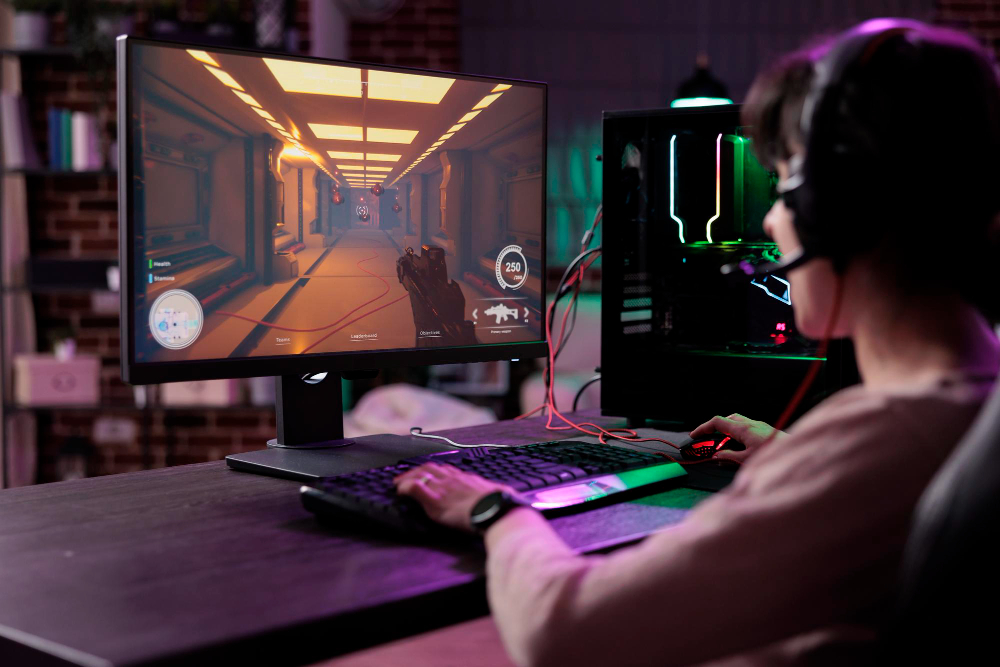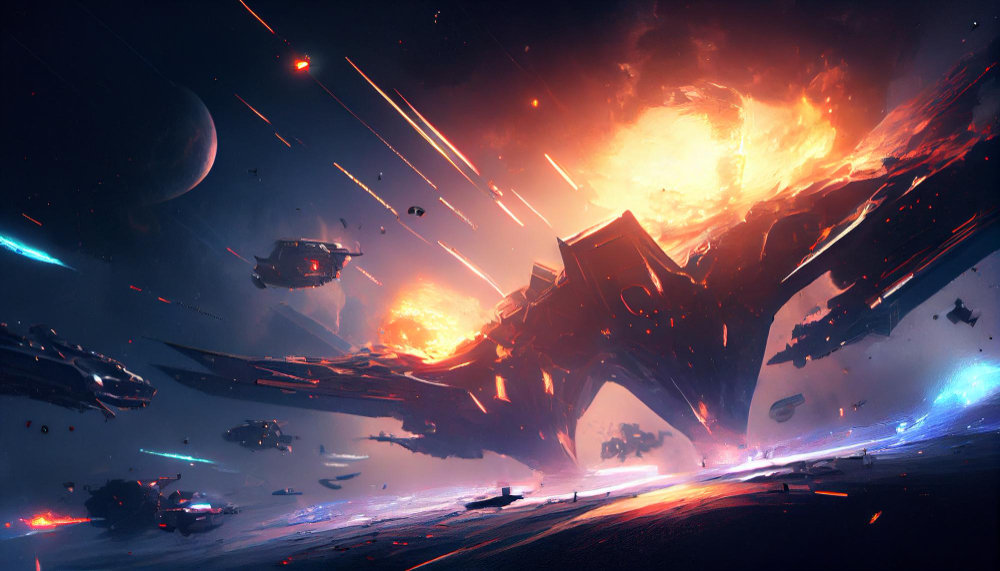Gaming has come a long way since the days of pixelated sprites and 2D landscapes. One of the most significant advancements has been the introduction of 3D characters. The immersive worlds of video games are brought to life by 3D characters that play a pivotal role in shaping our gaming experiences. Whether you’re a casual gamer or a dedicated enthusiast, you’ve probably noticed how a well-designed 3D character can make or break a game. These digital beings are more than just avatars on the screen; they are the heroes, heroines, villains, and companions that accompany the players on their virtual adventures.
Let’s delve into the art and science of creating compelling 3D characters and explore ten hacks that can elevate your gaming experience to new heights. Whether you’re a gamer looking to appreciate the mechanism behind your favorite titles or a developer seeking to enhance your character design skills, these insights will deepen your understanding of 3D characters in gaming.
Hack 1: Customization is Key
One of the first things players notice when starting a new game is the character customization screen. This is where players have the opportunity to shape their in-game persona, and it’s a crucial aspect of player agency. Customization allows players to connect with their characters on a personal level, making the gaming experience more immersive.
Firstly, provide a wide range of customization options, including hairstyles, clothing, accessories, and even personality traits. When designing a virtual character or avatar, it’s essential to offer a diverse array of customization options, such as hairstyles, clothing, accessories, and even personality traits, to allow users to create a unique and personalized digital representation of themselves.
Secondly, consider the cultural and historical context of your game world when designing customization options. Additionally, allow players to modify their characters throughout the game to reflect their evolving journey.
When players invest time in creating a character that represents them or embodies their vision, they become more emotionally attached to the game. This emotional investment can enhance immersion and lead to a more satisfying gaming experience.

Hack 2: Mastering 3D Character Movement
In the realm of 3D gaming, character movement is a make-or-break element. Players expect fluid, natural movements that mimic real-life actions. Stiff or awkward animations can instantly break immersion.
Implement motion capture technology to capture realistic human movements, ensuring a more immersive and authentic experience for users interacting with your virtual characters or games.
Additionally, pay meticulous attention to details such as weight, momentum, and physics in character animations, enhancing the overall believability and realism of the virtual world or game environment. Continuously refine and update character animations to ensure they remain current, engaging, and aligned with evolving user expectations and technological advancements.
Motion capture technology has revolutionized character animation in gaming. By recording the movements of real actors and translating them into digital characters, developers can achieve a level of realism that was previously unattainable.
Hack 3: Facial Expressions and Emotions in 3D Characters
Facial expressions are a powerful tool for conveying emotions in 3D characters. When characters emote convincingly, players can better understand their motivations, feelings, and reactions.
Employing advanced facial rigging technology and techniques is crucial in enabling a diverse and nuanced range of facial expressions for your virtual characters. This attention to detail not only adds depth and authenticity to their emotions but also creates a more immersive and engaging experience for users as they interact with these lifelike digital personas.
Moreover, pay close attention to subtle facial cues, including intricate eye movements and fleeting microexpressions, as they play a pivotal role in conveying the complexity of emotions and enriching the authenticity of your virtual characters’ interactions with users. Incorporate dynamic facial animations that respond dynamically to in-game events and dialogues, ensuring that your virtual characters’ expressions and reactions adapt naturally to the unfolding narrative and interactions, enhancing immersion and player engagement.
Characters with expressive faces can forge deeper emotional connections with players. Players are more likely to care about the fate of a character if they can read their emotions and empathize with their struggles.
Hack 4: Voice Acting and Dialogue in 3D Characters
Voice acting is an art form that adds an auditory dimension to 3D characters. Well-crafted dialogue and skilled voice actors can transform characters from mere polygons into living, breathing entities.
To start, select voice actors who have the ability to truly capture the essence of the character, ensuring that the vocal performances align seamlessly with the personality and identity of the virtual personas, thereby enhancing the overall storytelling and emotional resonance of your project.
Invest in professional recording and editing processes to guarantee top-notch audio quality, which is essential for creating an immersive and enjoyable experience for users engaging with your content.
Additionally, craft compelling, character-driven dialogue that not only propels the storyline forward but also delves into the depths of each character’s personality, enriching the narrative and fostering a more immersive and engaging user experience.
The quality of voice acting and dialogue can significantly impact the narrative of a game. A well-delivered line can evoke laughter, tears, or suspense, enhancing the overall storytelling experience.
Hack 5: Realistic Textures and Details in 3D Characters
When it comes to 3D character design, the devil is indeed in the details. Realistic textures, intricate clothing, and finely crafted accessories can make characters feel more tangible and believable.
To enhance the visual fidelity and lifelike appearance of character models, it is advisable to employ the use of high-resolution texture maps, which allow for the meticulous inclusion of fine-grained details, thereby enriching the overall aesthetics and immersive quality of your digital creations.
To add depth and backstory to your characters, it’s important to meticulously consider and incorporate the wear and tear on their clothing and equipment, using these visual elements as storytelling tools to convey the character’s history, experiences, and journey throughout the narrative.
Moreover, harness the power of physically-based rendering (PBR) techniques to meticulously craft lifelike materials for your character models, allowing for the accurate portrayal of surfaces and textures that respond realistically to lighting and environmental conditions, thereby elevating the overall visual authenticity of your digital creations.
Recent advancements in gaming hardware have allowed developers to push the boundaries of character detail. Next-gen consoles and powerful PC hardware enable the rendering of characters with lifelike skin, hair, and clothing textures.

Hack 6: Character Backstories and Development
Character development is not just about visual design—it’s also about the journey a character undergoes throughout the game. A compelling backstory and character arc can deepen player investment in the narrative.
Develop comprehensive character backstories that serve as a foundation for their motivations, actions, and decisions throughout the narrative, enriching the depth and relatability of your storytelling.
Strategically plot character growth and transformation as a dynamic and evolving aspect throughout the progression of the game, fostering a compelling and engaging narrative arc that resonates with players.
Unveil the intricacies of character backstory and evolution organically within the game by leveraging in-game interactions and dialogues, allowing players to actively engage with and discover the rich layers of your characters’ narratives.
Characters with rich backstories and well-defined arcs can contribute to a more immersive gaming experience. Players become emotionally invested in characters’ journeys and decisions.
Hack 7: Diversity and Inclusivity in 3D Characters
Diversity and inclusivity are essential aspects of modern character design. Representing a variety of races, genders, sexual orientations, and abilities can make games more inclusive and relatable to a broader audience.
Prior to creating content, conduct thorough research and engage in consultation with experts in relevant fields to ensure the accurate and respectful representation of diverse experiences, perspectives, and cultures within your work.
When crafting diverse 3D characters, exercise caution to steer clear of perpetuating harmful stereotypes and clichéd tropes, as this ensures that your portrayal remains authentic and respectful, fostering a more inclusive and responsible narrative.
Embrace diversity as an enriching opportunity to delve into distinctive storytelling perspectives, allowing it to serve as a source of creative inspiration and a means to broaden the depth and richness of your narrative.
When players see characters who look, think, or live like them, it fosters a sense of identification and connection. Inclusivity allows a more significant portion of the player base to see themselves in the characters they control or interact with.
Hack 8: AI and 3D Character Interactions
In gaming, it’s not just the player-controlled characters that matter; non-playable characters (NPCs) also play a vital role. To make the game world feel alive, NPCs must exhibit realistic and believable behavior.
Build robust AI systems that take into account character personalities and objectives, enabling more realistic and contextually aware interactions within your virtual worlds or games.
Guarantee that non-playable characters (NPCs) respond appropriately to player actions and decisions, enhancing the immersion and player agency in your game world or interactive narratives.
Additionally, develop dynamic NPC interactions that evolve in response to in-game events, contributing to a more engaging and adaptive player experience within your virtual environments or storytelling experiences.
Advancements in artificial intelligence are poised to transform character interactions in gaming. As AI technology continues to improve, we can expect even more realistic and adaptive NPC behavior in future games.
Hack 9: Multiplayer and Co-op Dynamics
Multiplayer and co-op games thrive on the collaboration between player-controlled characters. When characters complement each other in terms of abilities and roles, it enhances teamwork and strategic gameplay.
When designing gameplay systems, create character classes or roles that foster cooperation and coordination among players, enhancing teamwork and strategic depth in multiplayer experiences.
In addition, maintain a careful balance of character abilities to ensure that gameplay remains fair and enjoyable, preventing any single character from becoming overpowered and maintaining a level playing field for all participants.
Furthermore, cultivate a sense of camaraderie among players by encouraging meaningful character interactions, which can enhance social dynamics within your game and contribute to a more immersive and enjoyable gaming experience.
Well-designed characters can facilitate social connections among players. Friendships are forged and alliances are made as players collaborate to achieve common goals.
Hack 10: Player Empowerment and Choice
Player agency and choice are central to many modern games. Allowing players to make meaningful decisions about their characters’ actions and fates can lead to diverse and engaging gameplay experiences.
Elevate the depth of your narrative by offering branching storylines and multiple endings that dynamically adapt and unfold based on the decisions and choices made by players throughout the game, enabling them to shape their unique journey and fostering a deeply immersive and personalized storytelling experience.
Strive to strike a delicate balance between accommodating player choice and preserving narrative coherence, ensuring that the evolving storylines remain engaging and coherent even as players exercise their agency within the game world.
Lastly, enrich the player experience by allowing them to fully immerse themselves in the consequences of their decisions, experiencing both the positive and negative outcomes, which adds depth and realism to the interactive narrative.
Games that embrace player empowerment and choice often enjoy increased replayability. Players are motivated to explore different paths and outcomes, extending their time in the game world.

Conclusion
3D characters are the heart and soul of modern gaming. Their design, movement, and interactions shape our gaming experiences in profound ways. By mastering the art and science of character design, developers can create memorable games that captivate players and keep them coming back for more. Whether customizing their own avatar, empathizing with a character’s emotions, or making critical choices, these characters are at the core of the gaming experience. Therefore, it has become extremely crucial for all gaming enthusiasts to understand the intricacies of 3D characters and what they can bring to the table. So, elevate the gaming experience for all with 3D characters today.



